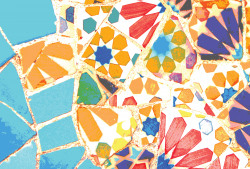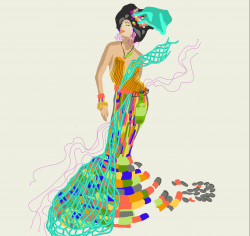If you want to see how drugs and alcohol breed artistic genius, take a glance at Manet, Van Gogh and Picassoshy;—the artists who gave absinthe its modern notoriety as a mysterious elixir that left lonely men dreaming of bright colors in drab pubs.
For Georgetown’s wannabe European student body, the allure of the drink lives on. What could be better than a flaming green shot of lyric-inducing liquor?
The classic way to prepare it is to place a spoon with a sugar cube on the rim of a shot of absinthe and then dribble ice-cold water over the sugar so that the dark green liquor below turns a mint shade.
The Czech method is more dramatic, if uncomfortably similar to the behavior of a heroin addict: dip the sugar cube in the liquor and then set it alight on a spoon. Let the sugar burn for a minute and then drop it into the glass.
Despite its fantastic presentation, however, a shot of absinthe is, in the end, merely a mouthful of cool licorice followed by a sweeping burning sensation that induces much suffering. Even if you survive the ordeal without throwing up or shamefully gulping water straight from the faucet, the promised hallucinations never come and your throat is left feeling like it’s been run over by a belt-sander.
It turns out that the absinthe currently sold legally in the U.S. and European Union doesn’t include enough of the essential ingredient—wormwood—to warp your mind. The myth of psychotic murderers spurred by absinthe earned its prohibition in much of Europe and in the United States in the early 20th century, spawning an underground trade in the stuff, and more recently, a wealth of dubiously authentic recipes for making absinthe and do-it-yourself kits available on the Internet.
The liquor that now passes for its notorious predecessor is like a less-refined and more alcoholic version of Jagermeister. The essential taste is aniseed, a distinctive flavor similar to licorice.
Aniseed flavors many more delicious liquors across the Mediterranean countries. Sambuca is the sweetest and most famous Italian variety, while Spain boasts anis del toro and Greece proudly gulps down ouzo. Across the Aegean Sea in Turkey, raki is the anisette beverage of choice, immortalized by Nobel Prize-winning Turkish author Orhan Pamuk in his 2004 novel Snow.
On a trip to Lebanon last spring, I found people complementing their mezze with a chilled glass of arak, a clear liquor distilled from grapes and aniseed diluted with water and ice to turn it an elegant, milky white color. The Lebanese drink pitchers of the stuff to cleanse their palates and their heads for a night out at Beirut’s famous night clubs.
All of these delicious liquors, served well-chilled, are a wonderful conclusion to a great night out. Forget about the green fairy of depressing Northern Europe and stick to the spirits of the sunny Mediterranean.




